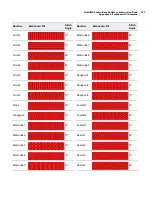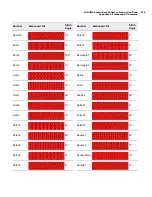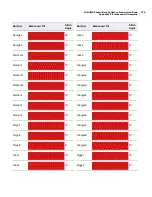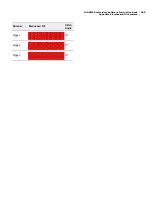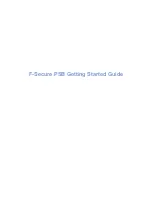
JANOME Embroidery Software Instruction Book
Glossary
290
I-beam: One shape taken by the
PC pointer, it indicates that text
can be input at the point selected.
The shape is like the capital letter
‘I’.
Image editing program: See
Graphics application
.
Image preparation: Method of
improving or clean up artwork.
Outlined and non-outlined images
require different methods of
preparation. Cleaning up scanned
images may involve any one or a
combination of the following
techniques: reducing the number
of colors, adding or emphasizing
outlines, removing noise, dithering
or anti-aliasing, eliminating
unnecessary detail, cropping
sections or eliminating
backgrounds.
Input method: See
Digitizing
tool
.
JPG: JPEG file interchange bitmap
image format.
Jump: A frame or hoop
movement without a needle
penetration, commonly used to get
from one point in a design to
another.
Lacework: Lacework involves the
use of threads to produce overall
embroidery of full-length fabrics.
Most often used to embellish
women's apparel and home
fashions. Such work typically uses
boring. It is the most widely used
application for Schiffli machines.
Layout: An arrangement of
multiple embroidery designs placed
in a user-defined area.
Lettering: Embroidery using
letters or words. Lettering
commonly called ‘keyboard
lettering’ may be created from
pre-defined alphabet styles or
fonts, allowing variance of size,
height, spacing, density and other
characteristics.
Lettering Art: Special effect
which makes objects bulge or arch,
stretch or compress. Lettering Art
is typically applied to lettering
objects, but can also be applied to
other types of embroidery object.
Line art: A drawing with only two
colors – usually black and white.
List box: A single-line dialog that
opens to display a list of choices.
Lockstitch: Commonly referred
to as a lock-down or tack-down
stitch, a lock stitch is formed by
three or four consecutive stitches
of at least a 10-point movement. It
should be used at the end of all
columns, fills and at the end of any
element in your design where jump
stitches will follow, such as color
changes or the end of a design.
May be stitched in a triangle, star
or in a straight line. Lock stitch is
also the name of the type of stitch
formed by the hook and needle of
home sewing machines, as well as
computerized embroidery
machines.
Logo: Name, symbol or
trademark of a company or
organization. Short for logotype.
Looping: Loops on the surface of
embroidery generally caused by
poor top tension or tension
problems. Typically occurs when
polyester top thread has been
improperly tensioned.
Manual object: When you open a
stitch format file without outline
recognition, it becomes a single
‘manual’ object. This object type
consists of a series of needle
penetration points and has only
general and connector properties.
When you transform (scale, rotate,
mirror) a manual object, the
original stitch density does not
change.
Max/Min stitch length: The
minimum and maximum stitch
lengths allowable in a design
determine the outside limits as
measured between needle
penetration points. They are
governed by the minimum and
maximum frame movements that
the machine can make.
Maximize button: For Windows,
the small box in the center of the
group of three at the right of the
title bar. Click the Maximize button
to enlarge a window to its
maximum size.
Memory: The place in the
computer’s system unit that stores
information while you are working
with it. If you exit without saving
information in memory, it will be
lost.
Menu bar: The menu bar
contains dropdown menus of
commands. Some of the same
commands are available on the
toolbar.
Menu chart: The menu chart
provided with the software lets you
select commands directly from the
digitizing tablet using the puck.
You need to ‘register’ it before use.
Minimize button: For Windows,
the small box to the left of the
group of three at the right of the
title bar. Click the Minimize button
to reduce a window to its minimum
size.
Minimum stitch length: The
minimum movement of the hoop.
It is measured between needle
penetration points. See also
Max/Min stitch
.
Mirror: Duplication of an object in
the Y and/or X axis. The location
and orientation of the mirrored
stitches are determined by location
and angle of the axis of reflection
relative to the position of the
original stitches.
Modeless dialog: Dialogs which
stay on the screen and are
available for use at any time but
permit other user activities. In
contrast, ‘modal’ dialogs require
the user to respond before
continuing the program.
Modem: Unit to telegraphically
send computer information from
one computer to another.
Monitor: The screen on which
punching or stitching progress can
be followed, stitch by stitch.
Monogram: Embroidered design
composed of one or more letters,
usually the initials of a name.
Motif: Pre-defined design
elements, such as hearts, leaves or
border patterns, that can be
quickly inserted into a design.
Motifs generally consist of one or
more simple objects, and are
stored in a special motif set.
Motif Fill: Motif Fill is a decorative
fill stitch with which you can fill
Parallel Fill objects. You can also
create special or three dimensional
effects.
Motif Run: Motifs which are
linked together along a digitized
line. You can create decorative
outlines using any motif from the
list.
Mouse: A device, equipped with
control buttons and designed to roll
about on the table next to the
Summary of Contents for DigitizerPro
Page 236: ...234 Part IX Software Feature Table ...


